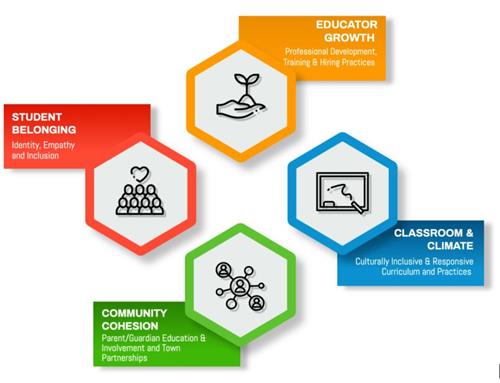What Makes a Speech Effective?
A speech becomes effective when it is clear, persuasive, and engages the audience. An effective speech captures the attention of listeners and conveys the desired message with impact and sincerity.
Crafting an effective speech requires more than just stringing together words and delivering them. It involves careful planning, an understanding of the audience, and the skill to connect emotionally with listeners. A great speech not only informs but also entertains, inspires, and motivates.
It leaves a lasting impression on the audience, making them think, feel, or take action. Whether it is a business presentation, a political address, or a commencement speech, an effective speech captivates individuals and propels ideas forward. We will explore the key elements that make a speech truly impactful and how incorporating them can enhance your ability to connect and persuade effectively.
The Importance Of Engaging Openings
An effective speech begins with an engaging opening that captivates the audience from the start. By avoiding commonly overused phrases, sentences can be concise and impactful, ensuring the audience remains interested throughout the speech. An engaging opening sets the stage for a successful and memorable speech.
Captivating The Audience From The Start
A great speech is not only about delivering a powerful message; it’s also about capturing the audience’s attention right from the beginning. Engaging openings are crucial in setting the tone for the rest of the speech. They help establish a connection between the speaker and the audience, making the speech more memorable and impactful.
Here are some effective techniques to create captivating openings:
Crafting A Compelling Hook
- Pose a thought-provoking question: Start your speech with a rhetorical question that stimulates the audience’s curiosity. This instantly grabs their attention and motivates them to think about the answer.
- Share a surprising statistic or fact: Begin with an intriguing statistic or fact that is related to the main theme of your speech. This unexpected information will pique the audience’s interest and inspire them to listen further.
- Use a powerful quote: Begin with a relevant and impactful quote from a well-known figure. This not only adds credibility to your speech but also creates an emotional connection with the audience.
Using Personal Stories To Connect
- Tell a relatable anecdote: Share a personal story or experience that relates to the topic at hand. This helps the audience connect with you on an emotional level and makes your speech more relatable and memorable.
- Use humor to break the ice: Kickstart your speech with a lighthearted joke or amusing anecdote. Humor is a great way to engage the audience and make them feel more at ease, fostering a positive atmosphere for the rest of the speech.
- Create a sense of urgency: Highlight a pressing issue or problem at the beginning of your speech to create a sense of urgency. This motivates the audience to pay attention and reinforces the importance of your message.
Remember, an effective speech begins with a captivating opening. By crafting a compelling hook and using personal stories to connect with your audience, you can ensure that your speech leaves a lasting impression and achieves its intended impact. So, start strong and watch as your audience becomes fully immersed in your words.
Structure And Organization
Effective speeches are characterized by their well-structured and organized content. A clear and logical flow of ideas, along with a strong introduction and memorable conclusion, captivates the audience and leaves a lasting impact.
Developing a Clear and Logical Flow:
- An effective speech requires a clear and logical flow to engage and captivate the audience. Here are some key points to consider when developing the structure and organization of your speech:
- Start with a compelling Begin your speech with a strong hook or an attention-grabbing opening line that sets the tone for the rest of your talk. This will instantly grab the audience’s attention and make them want to listen further.
- Outline your main points: Clearly outline the main points you will be discussing in your speech. This provides the audience with a roadmap of what to expect and helps them to follow along easily.
- Break it down into sections: Divide your speech into logical sections or segments. This helps to break down complex ideas into smaller, more digestible parts and ensures that your audience can follow the progression of your topic.
Using Transitions to Guide the Audience:
- Smooth transitions are essential to guide the audience from one point to another cohesively. Here’s how you can effectively incorporate transitions into your speech:
- Use transitional phrases: Transitional phrases like “moving on to the next point” or “let’s now turn our attention to” help signal to the audience that you are transitioning to a new topic or idea. It provides a smooth flow and keeps the audience engaged.
- Employ verbal cues: Utilize vocal cues such as tone, pausing, or emphasizing certain words or phrases to indicate a transition. This helps the audience focus on the shift in ideas and maintains their interest.
- Connect ideas logically: Ensure that your transitions connect the ideas logically and smoothly. Highlight the relationship between the previous point and the upcoming one to help the audience grasp the continuity of your speech.
Incorporating Memorable Key Points:
- To make your speech truly effective, you need to incorporate memorable key points that resonate with your audience. Here’s how you can achieve that:
- Use storytelling: Craft your speech around relatable and engaging stories that drive home your main points. Stories have a lasting impact and help your audience connect emotionally with the message you are delivering.
- Include vivid examples: Incorporate concrete examples, statistics, or anecdotes that support your key points. This adds credibility to your speech and makes it more memorable for the audience.
- Reinforce with repetition: Repeat your main points throughout the speech, emphasizing them each time to ensure they stick in the minds of your audience. Repetition helps reinforce key takeaways and aids in retention.
Remember, an effective speech is one that has a clear and logical flow, incorporates smooth transitions, and includes memorable key points. By following these guidelines, you can engage your audience and make a lasting impact with your words.
Effective Delivery Techniques
Delivering a truly effective speech requires a combination of engaging body language, strong vocal presence, and clear communication skills. It is essential to capture the audience’s attention and maintain their interest through captivating content and impactful delivery techniques.
Utilizing Body Language And Gestures
- Body language and gestures play a crucial role in delivering an effective speech. They enhance your message, captivate the audience, and convey confidence. Here are some techniques to help you utilize body language and gestures effectively:
- Maintain an open and upright posture: Stand tall with your shoulders back and avoid crossing your arms or hunching over. This posture exudes confidence and commands attention.
- Use hand gestures purposefully: Strategic hand movements can emphasize key points, add emphasis, and engage the audience. For example, pointing your finger can highlight important information, while open palms can convey openness and honesty.
- Employ facial expressions: Your face is a powerful tool for expressing emotions and building a rapport with the audience. Smile to convey warmth and approachability, furrow your eyebrows to show concern, and make eye contact to connect with individuals.
- Move strategically: Controlled movements can enhance your speech’s impact. Walk purposefully across the stage or step closer to the audience to create a sense of proximity and connection. However, avoid pacing excessively, as it can be distracting.
- Mirror your audience: Pay attention to your audience’s body language and adjust your mannerisms accordingly. If they seem engaged and enthusiastic, match their energy level. If they appear more reserved, tone down your gestures to avoid overwhelming them.
Harnessing The Power Of Vocal Variety
- The way you modulate your voice can significantly impact the effectiveness of your speech. Vocal variety adds depth, emotion, and intrigue to your words. Here are some techniques to harness the power of vocal variety:
- Adjust your volume: Varying your volume helps you emphasize crucial points and maintain the audience’s engagement. Speak louder to grab attention or soften your voice to create a sense of intimacy during reflective moments.
- Pace your delivery: Altering your speaking speed can add excitement, create suspense, or convey importance. Speak faster during energetic sections to keep the audience enthralled, and slow down for emphasis on significant details or concepts.
- Play with pitch: Experimenting with pitch can inject life into your speech. Raise your pitch to convey enthusiasm and excitement, or lower it to emphasize seriousness or urgency. Remember to maintain naturalness and avoid sounding artificial.
- Master pauses: Strategic pauses can add impact and give the audience time to absorb your words. Use short pauses for emphasis or longer ones to build anticipation. Pausing before a punchline or a significant revelation can amplify their effect.
- Inject emotion: Infuse your voice with appropriate emotions that align with your speech’s tone. Express passion, joy, anger, or sadness through your voice, as it helps the audience connect with your message on a deeper level.
Connecting With Eye Contact
- Eye contact is a powerful tool for establishing rapport, building trust, and connecting with your audience on an emotional level. Skillful eye contact allows you to establish authority and engage everyone in the room. Here are a few tips to connect with eye contact:
- Maintain regular eye contact: Scan the room and make eye contact with different individuals throughout your speech. This inclusiveness makes people feel involved and encourages active listening.
- Hold eye contact briefly: Ensure your gaze doesn’t linger for an uncomfortable period. Give each person a moment of connection, then shift your focus to another audience member. This way, everyone feels acknowledged.
- Avoid reading from notes: Staring down at your notes for an extended period distracts from eye contact. Familiarize yourself with the speech content and minimize the reliance on written cues, allowing you to maintain eye contact effortlessly.
- Engage all parts of the room: Distribute your eye contact evenly among audience members across the room. This way, people on the sides or back won’t feel left out, and it creates a sense of even attention.
- Use eye contact to emphasize key points: While delivering essential information or making important statements, lock eyes with individuals to enhance the impact of your message. This shows conviction and drives home the significance of your words.
By utilizing body language and gestures effectively, harnessing the power of vocal variety, and connecting with eye contact, you can enhance the delivery of your speech and leave a lasting impression on your audience.
Emotional Appeal And Storytelling
An effective speech captivates its audience through emotional appeal and storytelling, creating a connection that resonates deeply. By weaving a compelling narrative and appealing to the emotions, a speaker can leave a lasting impact on listeners, making the speech memorable and persuasive.
Evoking Emotions Through Personal Anecdotes
- Using relatable stories: A well-crafted speech taps into the power of personal anecdotes to engage the audience emotionally. By sharing genuine experiences, the speaker connects on a deeper level, making the message more memorable.
- Highlighting shared experiences: Evoking emotions can be as simple as reflecting on shared human experiences. When a speaker recounts relatable situations, the audience can easily relate and empathize, creating an emotional bond.
- Injecting humor and vulnerability: Adding a touch of humor to a speech lightens the mood and helps the audience feel more connected. Similarly, vulnerability can be powerful, as it conveys authenticity and allows for deeper emotional resonance.
Using Pathos To Persuade
- Appealing to basic human emotions: Pathos, the technique of appealing to emotions, can be an influential tool in persuasive speeches. By understanding and tapping into emotions such as joy, fear, anger, or compassion, speakers can sway the audience’s opinions and inspire action.
- Sharing compelling personal stories: A speech that incorporates personal stories or testimonials can evoke empathy and compassion from the audience. When listeners can connect emotionally to the speaker’s experiences, they are more likely to be persuaded by the speaker’s arguments.
- Using vivid imagery and sensory language: Engaging the audience’s senses helps create a deeper emotional experience. Painting a vivid picture through descriptive language can transport listeners into the story, allowing them to feel the emotions firsthand.
Creating A Memorable Narrative Arc
- Establishing a clear structure: A well-structured speech with a defined beginning, middle, and end helps the audience follow along and retain information. By providing a logical progression, the speaker can guide the audience through an emotional journey.
- Introducing conflict and resolution: A captivating speech incorporates a narrative arc that introduces conflict or challenges and offers a resolution. This narrative structure keeps the audience engaged and invested in the outcome, making the speech more memorable.
- Building anticipation and suspense: Creating tension or anticipation within a speech captures the audience’s attention and keeps them engaged. By strategically pacing the storytelling and revealing information gradually, the speaker can maintain interest and emotional investment.
Effective speeches utilize emotional appeal and storytelling to engage and persuade the audience. Through personal anecdotes, pathos, and a well-structured narrative arc, speakers can tap into emotions, foster connections, and leave a lasting impact on their listeners.
Fostering Credibility And Trust
An effective speech fosters credibility and trust by conveying a persuasive message with confidence and authenticity. It captivates the audience with concise and impactful sentences, establishing a strong rapport and leaving a lasting impression.
Establishing Authority through Research and Expertise:
- Conduct thorough research on the topic: The foundation of any effective speech lies in the speaker’s authority and expertise. Extensive research helps in gaining a deep understanding of the subject matter and allows the speaker to present accurate information to the audience.
- Use credible sources: Referencing reliable sources such as academic papers, expert opinions, and statistics enhances credibility and builds trust with the audience. It demonstrates that the information presented is backed by evidence and holds merit.
- Showcase credentials and experience: Sharing personal or professional experiences related to the topic helps establish authority. Highlighting any relevant qualifications or achievements in the field further solidifies the speaker’s expertise.
Building Connections with the Audience:
- Understand the audience: Effective speeches are tailored to resonate with the specific audience. Gain insights into their backgrounds, interests, and preferences to make the content relevant and relatable.
- Connect emotionally: Engaging the audience on an emotional level fosters a stronger connection and captivates their attention. Incorporate personal anecdotes, stories, or testimonials that evoke relatable emotions and create a sense of empathy.
- Use conversational language: Using simple, conversational language helps break down barriers and facilitates better understanding. Avoid using jargon or complex terminology that might alienate the audience.
- Incorporate humor and storytelling: Injecting appropriate humor and weaving compelling narratives into the speech boosts audience engagement. It adds an element of entertainment and holds their interest throughout.
Demonstrating Authenticity and Transparency:
- Be genuine and passionate: Speaking with authenticity and genuine passion about the topic breeds trust. The audience can sense when a speaker truly believes in what they are saying, and this sincerity strengthens their connection and credibility.
- Maintain eye contact and body language: Non-verbal cues like maintaining eye contact, using expressive gestures, and adopting an open posture convey sincerity and transparency. It helps establish rapport with the audience and conveys confidence.
- Admit limitations and present balanced viewpoints: Acknowledging any limitations or conflicting viewpoints related to the topic reflects honesty and transparency. Presenting a balanced perspective allows the audience to form their own opinions, fostering trust in the speaker’s integrity.
To make a speech effective, it is crucial to foster credibility and trust with the audience. By establishing authority through research and expertise, building connections, and demonstrating authenticity and transparency, speakers can effectively engage their audience and leave a lasting impact.

Credit: ronedmondson.com
Captivating Conclusions
An effective speech concludes with a captivating ending that leaves a lasting impression. By using powerful and memorable closing statements, the speaker can engage the audience and make their message truly impactful.
The conclusion of a speech is crucial as it leaves a lasting impression on the audience. It is the final opportunity for the speaker to reinforce key points and inspire action. A captivating conclusion should summarize the main ideas in a memorable way, inspire the audience to take action, and leave a lasting impression.
Summarizing Key Points In A Memorable Way:
- Restate the main ideas: Remind the audience of the main points discussed throughout the speech. This helps reinforce the key takeaways and ensures they are fresh in the minds of the audience.
- Use engaging language: Employ vivid and compelling language to summarize the key points. This helps create a lasting impression and ensures that the audience remembers the main ideas.
- Provide a clear structure: Organize the summary in a logical manner, ensuring that each point flows smoothly into the next. A well-structured summary helps the audience understand and remember the key points effectively.
- Utilize storytelling: Tell a brief anecdote or story that encapsulates the essence of your speech. Stories have a powerful impact on the audience and help make the main points more relatable and memorable.
- Include memorable phrases: Craft memorable, catchy phrases or slogans that encapsulate the essence of your speech. Using repetition or alliteration can make these phrases stick in the minds of the audience.
Inspiring Action And Empowering The Audience:
- Call to action: Encourage the audience to take action based on the information presented in the speech. This can be a specific action or a general call to apply the knowledge gained from the speech in their lives.
- Provide practical tips: Offer practical steps or tips that the audience can implement immediately. Giving them actionable advice makes them feel empowered and motivated to take charge of their own situation.
- Appeal to emotions: Evoke emotions in the concluding section to inspire the audience to act. Appeal to their desires, hopes, and dreams, and connect it to the main points of the speech. When the audience feels emotionally invested, they are more likely to take action.
- Share success stories: Highlight real-life success stories or examples of individuals who have taken action and achieved great results. This not only reinforces the main points but also motivates the audience by showing them the potential outcomes of their actions.
- Express confidence and belief: Convey a strong belief in the audience’s ability to bring about change and achieve the desired outcomes. When the audience feels supported and believed in, they are more likely to take action.
Leaving A Lasting Impression:
- End with a powerful quote: Conclude the speech with a relevant and impactful quote that encapsulates the main message. Quotes from renowned individuals can leave a lasting impression and inspire reflection.
- Engage through visuals: Incorporate visual aids or props that reinforce the main points and leave a visual impact on the audience. Visuals can be memorable and help drive home the key takeaways.
- Include a memorable story or anecdote: Share a personal story or an inspiring anecdote that relates to the main theme of the speech. Such stories resonate with the audience, making the speech memorable and impactful.
- Engage in a Q&A session: End the speech with a question-and-answer session or invite the audience to share their thoughts and experiences related to the topic. This enhances engagement and leaves a lasting impression of audience involvement.
- Finish with a strong statement: End the speech with a powerful statement that encapsulates the main message and leaves the audience pondering. A strong closing statement reinforces the overall impact of the speech and ensures the audience remembers the main ideas.
The Role Of Practice And Preparation
Effective speeches are the result of meticulous practice and thorough preparation. The key lies in honing delivery and ensuring a well-structured message that captivates the audience.
Rehearsing For Confidence And Fluency
Rehearsing a speech is essential for delivering an effective and impactful presentation. Through practice and preparation, speakers can gain confidence, enhance their fluency, and ensure a smooth delivery. Here are some key points to consider:
- Start by thoroughly understanding the content: Before practicing the speech, it is crucial to have a deep understanding of the topic. Research extensively, gather reliable information, and organize your thoughts in a logical manner.
- Develop an outline or script: Create an outline or a script that outlines the main points, supporting details, and the overall flow of your speech. This will serve as a roadmap during your practice sessions.
- Practice with different methods: Experiment with different approaches to rehearse your speech. You can try reciting aloud, writing and memorizing key points, or recording yourself and listening back to identify areas that need improvement.
- Time yourself: While practicing, it is important to keep track of the time. Ensure that your speech fits within the allocated time frame. If necessary, make adjustments to maintain a smooth and concise delivery.
- Incorporate vocal variety and gestures: Pay attention to your voice and body language while rehearsing. Practice using appropriate pauses, tone variations, and gestures to effectively convey your message and engage your audience.
- Seek feedback: Whenever possible, perform your speech in front of a trusted colleague, friend, or family member. Their feedback can provide valuable insights and help you identify areas for improvement.
Utilizing Visualization Techniques
Visualization techniques can significantly enhance the effectiveness of a speech. By vividly imagining the success of your presentation, you can boost your confidence and minimize stage fright. Consider the following techniques:
- Mental imagery: Visualize yourself giving a compelling speech from start to finish. Picture the audience’s positive reactions, your confident posture, and the impactful delivery of your key points. This mental rehearsal can help reduce anxiety and provide a positive outlook.
- Positive self-talk: Reinforce your confidence by engaging in positive self-talk. Remind yourself of your capabilities, knowledge, and the value you bring to the audience. Encourage yourself with phrases like, “I am well-prepared and can deliver this speech with confidence.”
- Relaxation exercises: Employ relaxation techniques such as deep breathing or progressive muscle relaxation before and during your speech. These exercises can help calm your nerves and promote a more focused and composed delivery.
- Envision audience engagement: Imagine an engaged and receptive audience. Visualize them nodding, smiling, and actively interacting with your speech. This visualization can help you adapt your delivery to better connect with your listeners.
Handling Nerves And Unexpected Situations
Nerves are natural when it comes to public speaking, but effective speakers know how to manage them and handle unexpected situations with grace. Consider the following strategies:
- Prepare for contingencies: Anticipate potential stumbling blocks or unexpected situations that may arise during your speech. Prepare backup plans or alternative approaches to handle these situations confidently and smoothly.
- Embrace the adrenaline rush: Recognize that nerves and excitement are often accompanied by an adrenaline rush. Redirect this energy into enthusiasm and passion for your topic, allowing it to enhance your overall performance.
- Focus on your audience: Shift your attention away from your nervousness and redirect it towards your audience’s needs and interests. By focusing on delivering value to the listeners, you can reduce self-consciousness and connect more effectively.
- Embrace mistakes: Understand that mistakes are a normal part of public speaking. Embrace them as learning opportunities and stay composed if a hiccup occurs. Admit and correct the mistake gracefully, then move on confidently.
- Practice relaxation techniques: Employ relaxation techniques, such as deep breathing or visualization, to calm your nerves before and during your speech. These techniques will help you stay focused and composed, even in high-pressure situations.
Remember, practice and preparation are key to delivering an effective speech. By rehearsing for confidence and fluency, utilizing visualization techniques, and learning to handle nerves and unexpected situations, you can enhance your speaking skills and captivate your audience.
The Power Of Visual Aids
Visual aids play a crucial role in making a speech effective. By using visuals such as graphs, images, and charts, speakers can enhance audience engagement, reinforce key points, and make information easier to understand. Visuals provide a powerful tool for communicating ideas and ensuring a memorable and impactful speech.
Effective speeches have the power to captivate and engage audiences, leaving a lasting impact on their minds. One key element that can greatly enhance the effectiveness of a speech is the use of visual aids. Visual aids, such as relevant graphics, slides, and props, not only make the speech more visually appealing but also help to convey information in a more memorable and comprehensive manner.
In this section, we will explore the various ways in which visual aids can contribute to an impactful speech.
Enhancing The Speech With Relevant Graphics
Visual aids, particularly graphics, can significantly enhance a speech by adding depth and clarity to the content being presented. Here are some ways in which relevant graphics can be effectively used to enhance a speech:
- Charts and graphs: Visual representations of data in the form of charts and graphs can help the audience better understand complex information and statistics.
- Infographics: By presenting information in a visually engaging manner, infographics can simplify complex concepts and make them more accessible to the audience.
- Images and photographs: The use of relevant images and photographs can evoke emotions, create a connection with the audience, and reinforce the message being conveyed.
Using Slides And Props Effectively
While graphics can undoubtedly enhance a speech, it is equally important to use slides and props in an effective manner. Here are some tips to ensure their optimal usage:
- Slides: When using slides, it is essential to keep them visually appealing, concise, and easy to read. Use bullet points, keywords, and minimal text to support your spoken words rather than duplicating them. Slides should serve as visual cues and help the audience stay focused on the main points of your speech.
- Props: Props can be powerful tools to reinforce your message and create a memorable impact on the audience. Consider using props that are relevant to your topic, easy to understand, and visually interesting. Ensure that the props are not too distracting and do not overshadow your speech.
Ensuring Visuals Enhance, Not Distract
While visual aids can greatly enhance a speech, it is crucial to strike the right balance and ensure that they do not distract the audience from the main message. Here are some important considerations:
- Relevance: Ensure that the visuals used are directly related to the topic and purpose of your speech. Irrelevant or confusing visuals can create confusion and detract from the overall impact.
- Simplicity: Keep the visuals simple and uncluttered. Avoid using too much text, complex diagrams, or busy backgrounds that may confuse or overwhelm the audience.
- Timing: Use visuals strategically to complement your speech and reinforce key points. Introduce visuals at appropriate moments to maintain the flow and engagement of your speech.
Incorporating visual aids such as relevant graphics, slides, and props can significantly enhance the effectiveness of a speech. By engaging the audience visually and reinforcing the main message, these visual aids contribute to a more memorable and impactful speech experience.
Remember to strike the right balance, ensuring that visuals enhance rather than distract, and adapt your visual aids to suit the needs and preferences of your audience.
Engaging With The Audience
Engaging with the audience is key to delivering an effective speech. By captivating their attention and connecting on a personal level, a speaker can leave a lasting impact and inspire action.
Engaging with the audience is a crucial aspect of delivering an effective speech. It involves encouraging participation and interaction, adapting to the audience’s needs and reactions, and creating a dialogic experience.
Encouraging Participation And Interaction:
- Incorporate interactive elements into your speech: Engage the audience by incorporating activities or exercises that encourage participation. This could include asking questions, conducting polls, or involving the audience in small group discussions.
- Utilize visual aids: Visual aids, such as slides or props, can enhance engagement and make your speech more interesting and relatable.
- Encourage questions and feedback: Create an open and welcoming environment where the audience feels comfortable asking questions or sharing their thoughts. Respond to their queries or comments to foster a sense of interactivity.
Adapting To The Audience’S Needs And Reactions:
- Research your audience beforehand: Gather information about your audience’s background, interests, and knowledge level. This will help you tailor your speech to their specific needs and ensure it resonates with them.
- Adjust your tone and language: Use language that is appropriate for your audience. Avoid using jargon or technical terms that may be unfamiliar to them. Adopt a conversational tone that enables easy understanding and connection.
- Pay attention to non-verbal cues: Observe your audience’s body language and reactions throughout your speech. Adjust your pace, tone, or content accordingly to keep their interest and engagement.
Creating A Dialogic Experience:
- Foster a two-way conversation: Encourage the audience to actively participate by asking open-ended questions or seeking their input on certain topics.
- Engage in active listening: Demonstrate that you value your audience’s opinions and perspectives by actively listening to their contributions. Reflect upon their thoughts and respond accordingly, promoting a sense of dialogue.
- Incorporate stories and anecdotes: Weave personal stories or anecdotes into your speech to create a more relatable and engaging experience. This allows the audience to connect with you on a deeper level.
Engaging with the audience is more than just delivering a monologue. By encouraging participation and interaction, adapting to the audience’s needs and reactions, and creating a dialogic experience, you can deliver a speech that is both impactful and memorable.
Overcoming Obstacles And Adversity
Overcoming obstacles and adversity can greatly enhance the effectiveness of a speech. By sharing personal challenges, providing relatable examples, and offering practical solutions, speakers can captivate their audience and inspire genuine connection. Through authentic storytelling and an empathetic tone, speakers can leave a lasting impact on their listeners.
Effective speeches have the power to captivate an audience, leaving a lasting impact. To achieve this, speakers must navigate and overcome various obstacles and adversity that may arise during their presentation. Addressing challenging questions and objections, effectively navigating technical difficulties, and maintaining composure in high-stakes situations are key elements in ensuring an effective speech.
Let’s explore each of these aspects in detail:
Addressing Challenging Questions And Objections:
- Be prepared: Anticipate potential questions and objections that may arise and prepare responses beforehand.
- Active listening: Pay close attention to the concerns and queries raised by the audience to ensure a comprehensive response.
- Empathy and understanding: Acknowledge the validity of different perspectives and address concerns with empathy, showing that you respect the audience’s point of view.
- Clear and concise answers: Respond to questions with clarity, avoiding technical jargon, and providing examples and evidence to support your points.
- Encourage dialogue: Foster an environment of open discussion, allowing the audience to express their thoughts and contributing to a dynamic and engaging speech.
Navigating Technical Difficulties With Ease:
- Testing and preparation: Thoroughly test audiovisual equipment and software to identify any potential technical issues before the speech.
- Back-up plans: Have a contingency plan in place in case of technical failures, such as having printed copies or using alternate presentation methods.
- Stay calm and adaptable: If technical issues arise during the speech, remain composed and adapt quickly to find alternative solutions.
- Engage the audience: During technical difficulties, maintain eye contact and continue delivering the speech without getting distracted, ensuring the audience’s attention remains focused.
Maintaining Composure In High-Stakes Situations:
- Build confidence: Thoroughly research and prepare your speech to boost self-assurance and lower anxiety levels.
- Breathing techniques: Practice deep breathing exercises to stay calm, composed, and in control of your emotions during high-stakes situations.
- Positive self-talk: Remind yourself of past successes and affirm your ability to handle challenging situations.
- Engage with the audience: Establish a connection with your audience by maintaining eye contact and using gestures to project confidence.
- Seek support: Surround yourself with a supportive network of peers, mentors, or experts who can provide guidance and encouragement.
Overcoming obstacles and adversity is an essential component of delivering an effective speech. By addressing challenging questions and objections, properly handling technical difficulties, and maintaining composure in high-stakes situations, speakers can ensure a memorable and impactful presentation. So, next time you step on the stage, remember that success lies in the way you handle these challenges.
Adapting To Different Speech Formats
To make a speech effective, one must be able to adapt to different speech formats, ensuring communication resonates with the audience and conveys the intended message clearly and persuasively. Understanding the nuances of various speech formats and tailoring the delivery accordingly is key to captivate listeners and achieve the desired impact.
Tailoring The Delivery For Various Settings
When it comes to delivering an effective speech, one of the key aspects to consider is adapting to different speech formats. Whether you are speaking in a formal conference, a casual gathering, or an intimate setting, tailoring your delivery can help make your speech more impactful.
Here are some ways to effectively adapt to different speech formats:
- Formal Conference:
- Put emphasis on a well-structured and organized speech to maintain professionalism.
- Use concise sentences to convey key points clearly.
- Utilize appropriate body language, such as maintaining eye contact with the audience and using expressive gestures.
- Incorporate well-researched facts and statistics to strengthen your arguments.
- Practice proper enunciation and articulation to ensure every word is clear and easily understood.
- Casual Gathering:
- Create a relaxed and conversational atmosphere to engage with the audience.
- Incorporate anecdotes and personal stories to make the speech relatable.
- Use humor appropriately to keep the audience entertained.
- Encourage audience participation through interactive elements like Q&A sessions or group discussions.
- Keep the language simple and avoid jargon to ensure everyone can understand.
- Intimate Setting:
- Establish a connection with the audience by using a warm and friendly tone.
- Engage on a personal level by addressing individual attendees by name, if appropriate.
- Encourage open dialogue and create opportunities for audience members to share their thoughts and experiences.
- Provide a supportive and inclusive environment where everyone feels comfortable expressing themselves.
- Place more emphasis on storytelling and emotion to create a deeper connection with the audience.
Adjusting The Approach For Different Time Constraints
Another crucial aspect of delivering an effective speech is adjusting the approach based on the time constraints of the speaking engagement. Whether you have a short time slot or an extended period, adapting your speech accordingly can help you make the most impact.
Here are some strategies for adjusting your approach:
- Short Time Constraints:
- Prioritize the most important points and trim unnecessary details to ensure you stay within the time limit.
- Use concise and impactful language to convey your message effectively within a limited timeframe.
- Focus on a clear and memorable opening and closing to leave a lasting impression.
- Utilize visual aids, such as slides or props, to enhance your speech and save time explaining complex concepts.
- Practice timing to ensure a seamless delivery without rushing through important ideas.
- Extended Time Constraints:
- Develop a well-structured speech with a logical flow of ideas to maintain the audience’s attention throughout the duration.
- Include more supporting examples, stories, and evidence to provide a comprehensive understanding of your topic.
- Allocate more time for audience interaction and discussion to foster deeper engagement.
- Allow for pauses and moments of reflection to give the audience time to absorb the information.
- Adapt the pacing and delivery style to maintain audience interest without losing momentum.
Customizing The Content For Specific Audiences
In addition to adapting the delivery and approach, customizing the content of your speech for specific audiences is crucial for maximum effectiveness. Here are some key considerations when customizing your speech content:
- Knowledge and Expertise:
- Assess the audience’s level of knowledge on the topic and adjust your language and depth of information accordingly.
- Provide explanations and background information for complex concepts, especially for audiences with limited familiarity on the subject.
- Avoid using jargon or technical terms that may alienate or confuse the audience.
- Tailor examples and analogies to align with the audience’s interests and experiences.
- Cultural Sensitivity:
- Be mindful of cultural differences when delivering speeches to diverse audiences.
- Avoid assumptions or stereotypes that may offend or exclude certain cultural groups.
- Research and respect cultural norms and sensitivities, adapting your content to ensure inclusivity.
- Incorporate examples and references that resonate with the audience’s cultural context.
- Interests and Motivations:
- Understand the interests and motivations of your audience to tailor your content accordingly.
- Highlight benefits and relevance of the topic to capture the audience’s attention and engagement.
- Use examples and anecdotes that align with the audience’s values and goals.
- Emphasize how the information or ideas presented can positively impact their lives or work.
By adapting to different speech formats, adjusting the approach for different time constraints, and customizing the content for specific audiences, you can significantly enhance the effectiveness of your speech and create a memorable experience for your listeners. Remember, each speaking engagement presents a unique opportunity to connect with your audience and leave a lasting impression.
Frequently Asked Questions For What Makes A Speech Effective
What Makes An Effective Speaking?
An effective speaking is brief, clear, engaging, and well-structured.
How Do I Know If A Speech Is Effective?
To evaluate speech effectiveness, look for clear objectives, audience engagement, persuasive arguments, and desired outcomes met.
What Are The 7 Elements Of A Good Speech?
The 7 elements of a good speech include clarity, organization, engaging introduction, compelling body, effective transitions, powerful conclusion, and confident delivery.
What Are The 5 Parts Of An Effective Speech?
The 5 parts of an effective speech are: introduction, body, main points, supporting evidence, and conclusion.
Conclusion
To summarize, an effective speech is one that captivates and engages the audience, while conveying a clear and compelling message. It relies on the power of words to create an emotional connection, using vivid storytelling and relatable examples. The speaker’s charisma and confidence also play a significant role in delivering a memorable speech.
Preparation is key; understanding the audience demographics, conducting thorough research, and practicing the delivery are all essential elements of an effective speech. Attention to body language, tone, and pacing further enhance the impact of the speech. Finally, a successful speech leaves a lasting impression by offering a call to action or leaving the audience with a thought-provoking message.
Mastering the art of effective speech delivery takes time and practice, but it is a valuable skill that can make a significant impact in various personal and professional settings.





